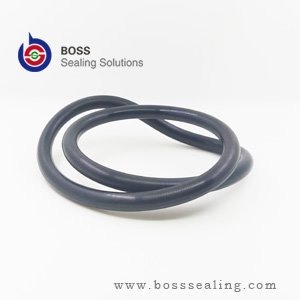Description
X-Rings, have a double sealing function as compared to an O-ring and can be used in a wide variety of static and dynamic sealing applications.
The four-lobed design provides twice the sealing surface in comparison to a standard o-ring. The double-seal action requires less squeeze to maintain an effective seal. This reduction in squeeze means less friction and improved seal life.
Additionally, X-Ring parting lines are between the lobes, away from the sealing surface. This eliminates the issue of leakage often resulting from a parting line’s irregular surface as found on an O-Ring.
X-Rings are also designed to outperform a standard O-Ring in rotary seal applications. The four-lobed configuration creates a more stable seal to avoid spiral twisting. This allows the use of a narrower groove width than a standard O-Ring groove, but can also be used in a standard O-Ring groove.
X-Rings are measured by their Cross Section and I.D., just like o-rings.
Advantages of X-Rings vs. O-Rings
- Avoid twisting in the groove. The seal does not tend to roll in the groove during reciprocating movement.
- Low friction. It requires less radial squeeze than a comparable O-ring.
- Less friction means less wear, and thus a longer service life.
- Very good sealing efficiency due to it special profile.
- A lubricant reservoir formed between the sealing lips improves start up
| APPLICATIONS | ||
| • Automotive | • Power Generation | • Petrochemicals |
| • Fluid Power | • Instrumentation | • Chemicals & Fertilizer Plants |
| • Electronics | • Filtration | • Pharmaceuticals |
| • Hydraulic Fittings | • Hydraulic Cylinders | • Pneumatic Cylinders |
| • Valves and Pumps | • Plumbing Products | • Dairy/Food Processing |
| • Earthmoving & Construction Equipment | ||







